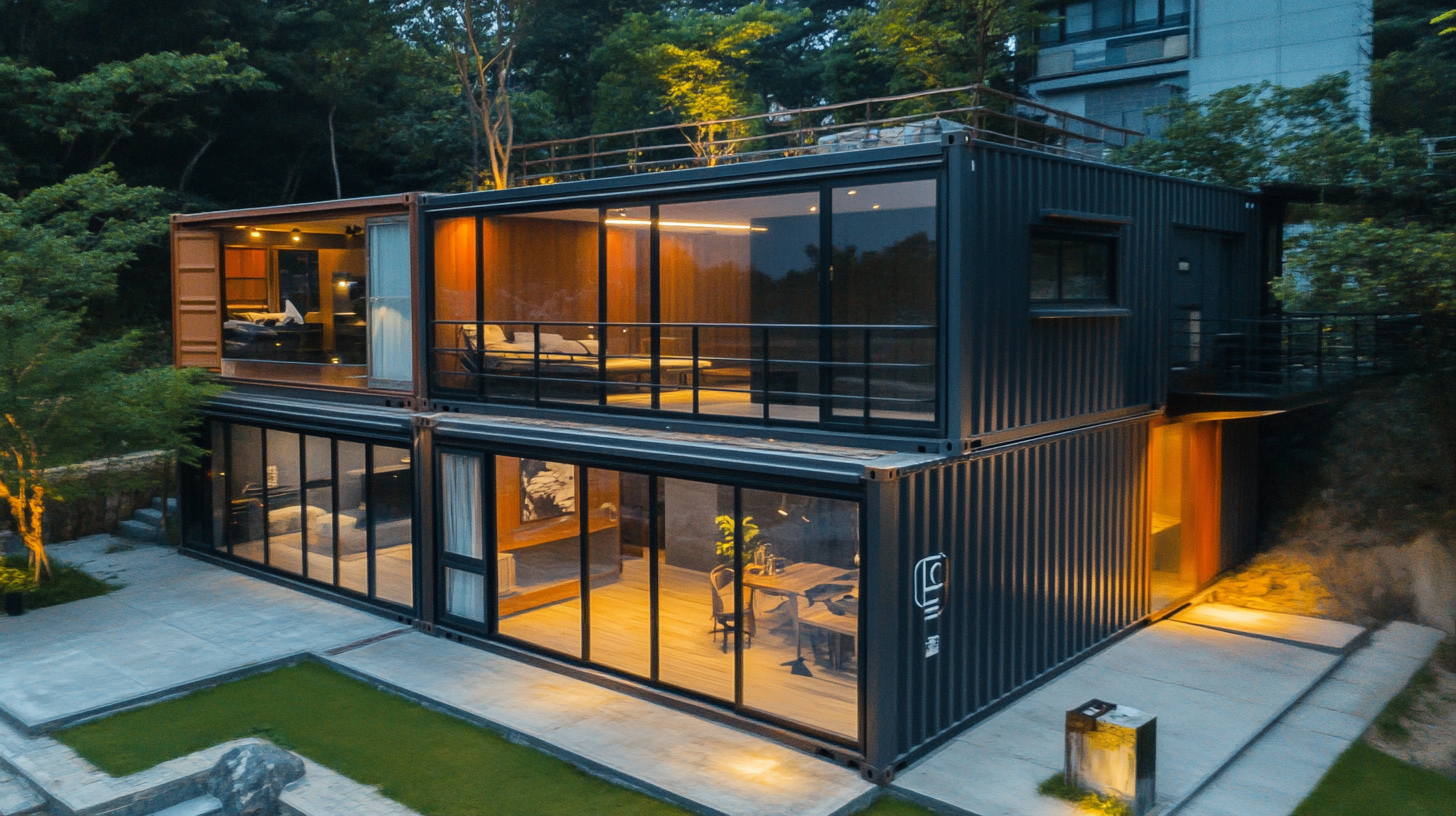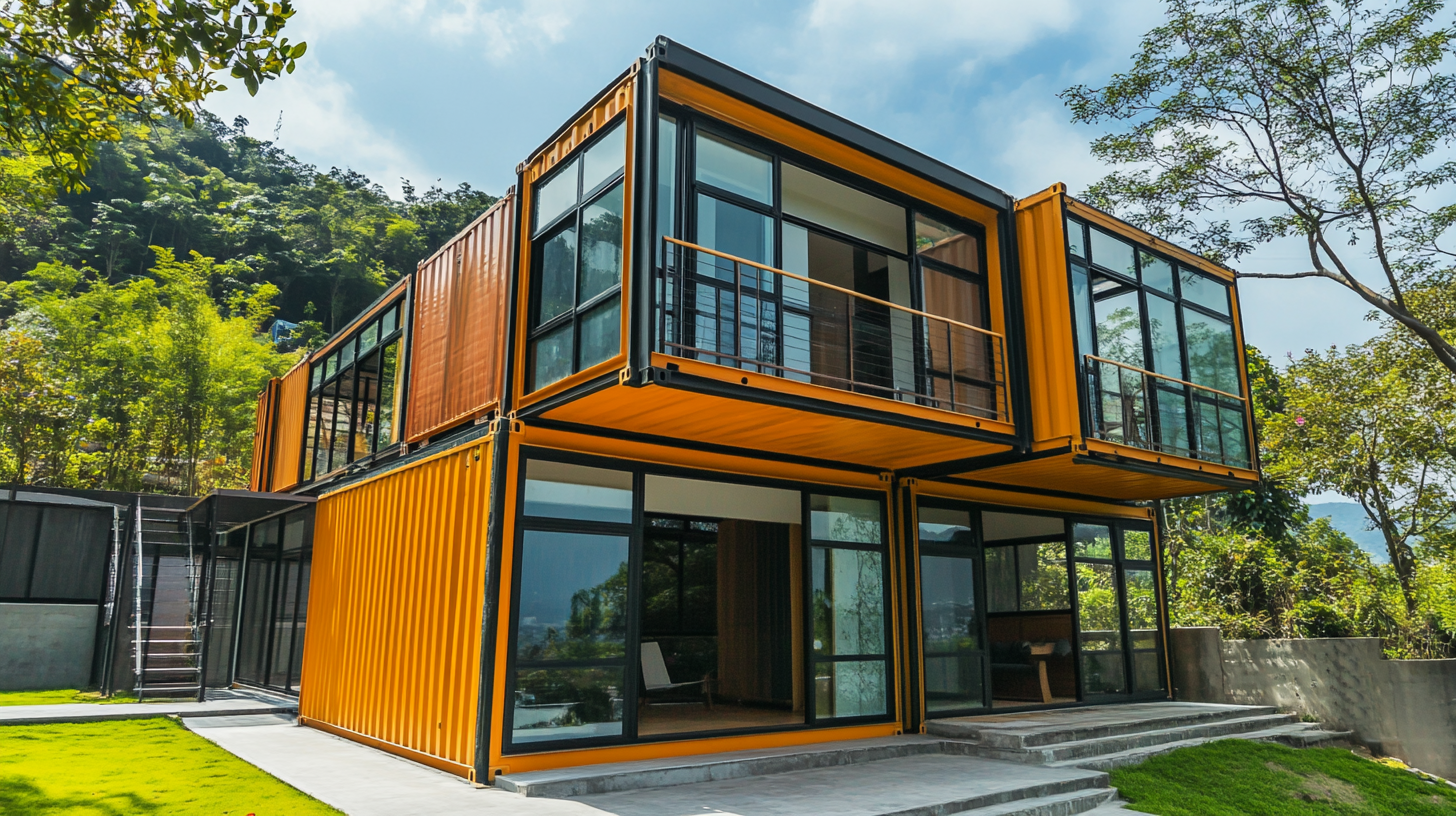The rising popularity of Modular Container Homes represents a significant shift in the global housing market, driven by factors such as affordability, sustainability, and versatile design options. According to a report from ResearchAndMarkets, the global modular construction market is anticipated to grow at a CAGR of 6.3% from 2021 to 2026, highlighting the increasing acceptance of innovative building solutions like container homes. Furthermore, a study by Transparency Market Research indicates that the demand for eco-friendly housing alternatives is pushing buyers towards modular options that minimize construction waste and reduce energy consumption. However, potential buyers must navigate various challenges such as zoning regulations, structural integrity concerns, and integration with existing infrastructure. This guide aims to address these issues while providing insights into the best practices for selecting high-quality Modular Container Homes that meet diverse needs and preferences in an evolving market.

Modular container homes have gained significant popularity as a sustainable and versatile housing solution. These homes are constructed from repurposed shipping containers, making them an eco-friendly choice that appeals to environmentally conscious buyers. Understanding the basic components and advantages of modular container homes is crucial for anyone considering this innovative living option. These structures are not only cost-effective but also offer flexibility in design, allowing homeowners to create unique spaces that cater to their specific needs.
One of the key benefits of modular container homes is their quick and efficient construction process. Traditional building methods can take months or even years, while container homes can be rapidly assembled, significantly reducing the time to move in. Moreover, these homes can be easily transported, making them ideal for those who require mobility or wish to relocate frequently. Additionally, their durability and low maintenance requirements make them a practical long-term investment. As global buyers explore alternative housing solutions, modular container homes present a modern and attractive way to embrace a sustainable lifestyle.
| Feature | Description | Pros | Cons |
|---|---|---|---|
| Cost | Generally lower than traditional homes | Affordable, Flexible financing options | Variability in actual costs based on specifications |
| Customization | Highly customizable in layout and design | Unique structures, personal touch | Longer design phase |
| Sustainability | Typically made from recycled materials | Eco-friendly, reduced waste | May require additional insulation |
| Mobility | Can be relocated easily | Flexible living options | Transportation costs can be high |
| Maintenance | Less maintenance involved compared to traditional homes | Durable materials | Occasional inspections needed for rust and corrosion |
 When selecting modular container homes, buyers should prioritize several key features to ensure their investment meets needs and expectations. One of the most significant aspects to consider is insulation. According to a report by the Container Housing Research Institute, effective insulation can reduce energy costs by up to 30%, making it vital in both hot and cold climates. Adequate insulation not only contributes to energy efficiency but also enhances overall comfort, ensuring that the living space remains cozy year-round.
When selecting modular container homes, buyers should prioritize several key features to ensure their investment meets needs and expectations. One of the most significant aspects to consider is insulation. According to a report by the Container Housing Research Institute, effective insulation can reduce energy costs by up to 30%, making it vital in both hot and cold climates. Adequate insulation not only contributes to energy efficiency but also enhances overall comfort, ensuring that the living space remains cozy year-round.
Another crucial feature is the structural integrity and durability of the container. Reports indicate that well-designed modular homes can withstand extreme weather conditions, with some models offering resistance against winds of up to 180 miles per hour. Buyers should look for companies that utilize high-strength steel and adhere to strict building codes to ensure longevity and safety. Additionally, customization options allow homeowners to tailor their spaces to their unique lifestyles, where flexibility in layout and finishes can significantly impact satisfaction levels. A recent survey highlighted that 78% of modular home owners valued customization as a top priority when choosing their homes, underscoring its importance in the decision-making process.
When choosing a modular container home, selecting the right manufacturer is crucial. Here are five top modular container home manufacturers catering to global buyers, each offering unique designs and features that meet diverse needs.
1. **Container Homes USA** stands out for its customizable options, allowing clients to design their dream homes with eco-friendly materials that do not compromise on aesthetics.
2. **Eco-Fab Homes** focuses on sustainability, providing energy-efficient homes that are not only affordable but also minimize environmental impact.
3. **Modular Home Builders** has a robust reputation for quality construction and innovative designs, ensuring that each container home is built to withstand various climatic conditions.
**Tips**: When selecting a modular container home manufacturer, consider the warranty options provided. A reliable warranty can shield you from unexpected costs. Additionally, review client testimonials and case studies to gauge the manufacturer’s credibility and post-installation support. Lastly, check local regulations regarding container homes to ensure compliance with zoning laws and building codes.
When budgeting for your modular container home project, it's essential to consider various factors that can significantly impact costs. The rising trend of shipping container homes is partially driven by their eco-friendliness and cost-effectiveness. With cities like Evansville introducing shipping container homes to the real estate market, potential buyers should be aware of the initial investment required, which can include site preparation, utility connections, and interior finishes.
One key tip is to carefully assess the location where you intend to place your container home. Costs can vary widely based on local regulations, land prices, and utility access. Additionally, explore creative financing options or potential tax incentives that might be available for eco-friendly housing projects.
Another important aspect is evaluating the materials and finishes you choose. While shipping containers themselves are relatively affordable, the overall project can escalate quickly if you opt for high-end appliances or elaborate landscaping. Prioritize your needs versus wants and plan a detailed budget that considers both the upfront investment and the long-term maintenance of your modular home.
When selecting modular container homes, sustainability should be at the forefront of any global buyer's decision-making process. According to a report by the United Nations, the construction industry contributes approximately 39% of global carbon emissions, making the choice of building materials and methods crucial for environmentally conscious buyers. Modular container homes, often made from repurposed shipping containers, not only reduce waste but also demand less energy for construction and upkeep compared to traditional housing options.

Tip: Consider homes that utilize energy-efficient insulation and solar panels to enhance sustainability further. These features can significantly lower energy consumption, contributing to smaller carbon footprints over time.
Moreover, sourcing materials from local vendors can minimize transportation emissions and support regional economies. A study by the World Green Building Council indicates that buildings designed with sustainable practices can reduce energy use by up to 80%. Buyers should inquire about the certifications of their chosen modular container home, ensuring it meets established green building standards.
Tip: Look for certifications such as LEED (Leadership in Energy and Environmental Design) that not only affirm environmental friendliness but also guarantee better long-term savings on utility costs. By prioritizing these sustainability factors, buyers can make informed choices that benefit both their wallets and the planet.
